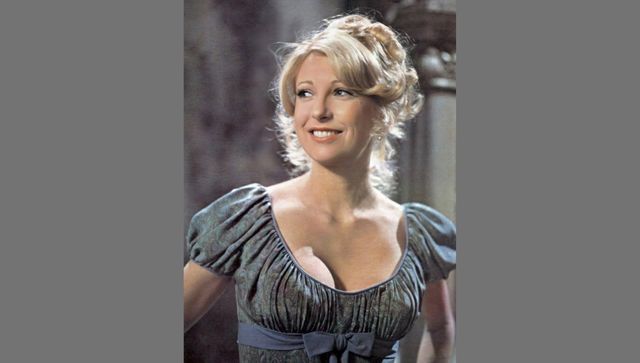New Breakthrough In Jan. 6 Pipe Bomb Case Sends Shockwave Through DC
An analysis comparing the gait of a former female U.S. Capitol Police officer to that of the unidentified January 6 pipe bomb suspect produced a 94% to 98% match, according to a Blaze News investigation corroborated by multiple intelligence sources.
A source familiar with a congressional inquiry into the events of January 6 also told Blaze News that new evidence has surfaced suggesting possible law enforcement involvement in the placement of the explosive devices.
A software algorithm that measures walking characteristics such as knee flexion, hip extension, speed, step length, cadence, and gait variance identified Shauni Rae Kerkhoff, 31, of Alexandria, Va., as a 94% match to the individual seen in surveillance footage placing the January 6 pipe bombs on Jan. 5, 2021, Blaze News reported.
No arrests have been made, however, and no one has been charged as of this writing.
The veteran analyst who conducted the study for Blaze News said that based on his own visual assessment — compensating for areas where the software can struggle — he estimated the match to be closer to 98%.
According to sources cited by Blaze News, Kerkhoff served as a U.S. Capitol Police officer for four and a half years before leaving the department in mid-2021 to take a security position with the Central Intelligence Agency, the outlet said.
CIA spokeswoman Liz Lyons confirmed that the individual in question was employed in campus security.
On Friday night, law enforcement officers appeared to be monitoring Kerkhoff’s residence in Alexandria, Va., according to Blaze News. The outlet’s editor in chief, Christopher Bedford, said he was briefly pulled over by local police after stopping near the home to observe the property but was later permitted to leave.
The FBI — which has been unable to solve the January 6 pipe bomb case after nearly five years of investigation — was within feet of the suspect’s Falls Church address just days after the incident, the outlet reported. The bureau reportedly began closing in on the lead after Blaze News shared its findings with intelligence sources.
Former FBI Special Agent Kyle Seraphin told the outlet that he recently realized he had conducted surveillance at a residence next door to the woman now suspected of planting the pipe bombs.
“The FBI put us one door away from the pipe bomber within days of January 6, and we were deliberately pulled away for no logical or logically investigative reason,” Seraphin told Blaze News Friday. “And everything about that tells me that they were involved in a cover-up and have been since day one.
“They were f**king in on it,” he added.
Seraphin told Blaze News that he had suggested conducting a “knock and talk” with an Air Force civilian employee whose address was linked to a vehicle seen picking up the pipe bomb suspect in Falls Church, Va., on Jan. 5, 2021.
He said his team conducted surveillance on the individual for two days, but his request to approach the person of interest was denied, and the team was pulled from the assignment later that same night.
Seraphin added that he has publicly shared these same details since 2021. “There’s a personal reaction to it, which is the complete vindication that the things I’ve been saying and my recollection of being briefed on this stuff has been accurate for years and I’ve never changed my tune,” he told the outlet.
The forensic analysis commissioned by Blaze News found that Shauni Rae Kerkhoff’s gait matched that of the January 6 pipe-bomb suspect by as much as 98%, according to several current intelligence sources who reviewed the findings.
The analyst who conducted the comparison said the software alone rated the match at 94%, but based on his own assessment — combining human analysis with the program’s results — he estimated the similarity at between 96% and 98%.
Footage of Kerkhoff’s gait was taken from U.S. Capitol Police CCTV video recorded on January 6 and compared to unedited surveillance footage of the suspect wearing a hooded sweatshirt and walking through an alley near C Street to place a suspected pipe bomb behind the Capitol Hill Club around 8:16 p.m. on January 5, 2021, the outlet said.
Behind Teri Garr’s radiant screen presence was a story of grit, grace, and quiet defiance

She danced behind Elvis, cracked up Mel Brooks, and nearly stole Tootsie from Dustin Hoffman — all with a raised eyebrow and impeccable timing. Teri Garr was the kind of performer who made it all look effortless. With her sunny smile and razor-sharp comedic instincts, she lit up every screen she touched. But behind the sparkle and the laughs was a story of grit, grace, and quiet defiance — the kind of journey that makes her one of Hollywood’s most fascinating, and perhaps underrated, icons.

Born in Lakewood, Ohio, in 1944, Teri Garr seemed destined for the stage. Her father was a vaudeville comedian and actor, and her mother a dancer and wardrobe mistress, so entertainment ran through her veins. But nothing was handed to her. After her father passed away when she was young, her mother raised three children on her own, and Garr learned early what resilience meant. Dancing became her escape, her language, and her ticket into show business.
Her career began in the background — quite literally. If you squint at some of Elvis Presley’s early films from the 1960s, you’ll spot her twirling in the chorus line. She was a go-to dancer for choreographer David Winters, appearing in more than a dozen Elvis movies, paying her dues while soaking in every ounce of experience Hollywood could give. But Garr wasn’t content to stay in the background. She wanted to speak, to crack jokes, to take center stage.

Her big break came with Mel Brooks’ Young Frankenstein in 1974. As Inga, the wide-eyed, thick-accented assistant to Gene Wilder’s Dr. Frankenstein, Garr turned what could have been a one-note part into comedic gold. With her mix of innocence and sly wit, she stole scenes with nothing more than a glance, a perfectly timed pause, or the delivery of a single, hilarious line. Brooks called her a “comic natural,” and audiences agreed. She was suddenly everywhere.
The late 1970s and early 1980s cemented Garr as one of the most versatile actresses in Hollywood. She could do screwball comedy, like in Oh, God! opposite John Denver, and then turn around and deliver subtle drama. But it was Sydney Pollack’s 1982 classic Tootsie that became her signature. Playing Sandy, the insecure but endearing actress and girlfriend to Dustin Hoffman’s struggling actor, Garr brought warmth and pathos to a film brimming with satire. Her performance earned her an Academy Award nomination for Best Supporting Actress — and in many ways, she became the emotional heart of the movie.

What made Garr so remarkable was her range. She could be the ditzy blonde with perfect comedic timing, but she also infused those roles with intelligence and humanity. She didn’t condescend to her characters. Instead, she gave them depth. Even when Hollywood tried to pigeonhole her, Garr resisted with grace, choosing roles that allowed her to stretch, whether in dramas like The Conversation or family favorites like Close Encounters of the Third Kind and Mr. Mom.
Yet behind the glamour of the spotlight, Garr’s life carried challenges that required enormous strength. For years, she lived with symptoms of multiple sclerosis before being officially diagnosed in 1999. Instead of retreating, she became an advocate, using her platform to raise awareness about the disease. With her signature wit intact, she spoke candidly about her health, never allowing it to define her. “I’ve always been a fighter,” she once said. “That’s the only way you get through this business, or through life.”

Her candor extended beyond her illness. Garr was refreshingly honest about Hollywood itself — about the sexism, the typecasting, the uphill battles faced by women in comedy. She carved her path at a time when women were often sidelined as decoration or sidekicks, proving they could be just as funny, layered, and memorable as their male counterparts. In doing so, she paved the way for a generation of actresses who would follow.
By the 2000s, Garr had slowed her career but never stopped working entirely, appearing in TV favorites like Friends (as Phoebe’s eccentric mother) and continuing to bring her unique brand of humor to every role. To her fans, she was more than just an actress — she was a reminder of an era when talent, charm, and resilience mattered more than spectacle.

Looking back, what makes Teri Garr’s story so compelling isn’t just the highlight reel of roles, though there are plenty: from her first comedic explosion in Young Frankenstein to her Oscar-nominated brilliance in Tootsie, from her dance steps behind Elvis to her touching performances in dramas. It’s the way she carried herself through it all — with grit, grace, and a refusal to let challenges dim her light.
She once joked that she built her career on “the power of the raised eyebrow.” But it was more than that. It was her timing, her honesty, her courage to be silly and serious, glamorous and grounded, all at once. In many ways, she was Hollywood’s secret weapon: you might come for the big names, but you’d leave remembering Teri Garr.

Think you know her? Maybe you know her laugh, her smile, her unforgettable performances. But the full story of Teri Garr is even richer: a dancer who became a star, a comedienne who could break your heart, a woman who never stopped fighting. And in that, she remains one of Hollywood’s most enduring treasures.





